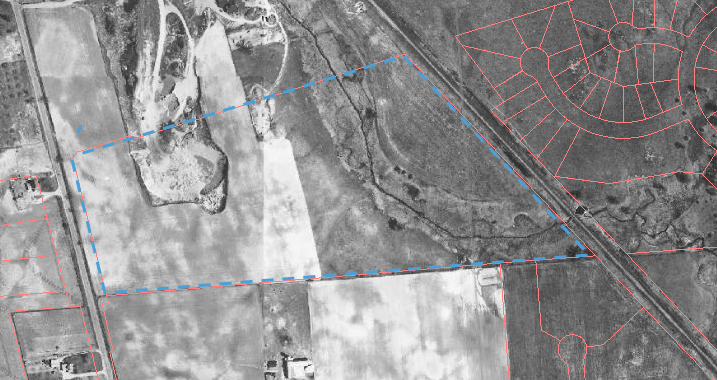History
Ann Arbor's city parks sit on the ancestral and traditional homelands of several indigenous Native peoples. Read a
land acknowledgement from the city and learn more about the early history of the land
here.
On first glance it may appear that the many recreational features were carved into the woods and natural features already existing on this 54 acres of land. It wasn’t that long ago, though, that the park site was home to a gravel mining operation and many of the natural features found today weren’t even present. Extensive illegal dumping was also a problem on the property. The location is separated from adjoining habitats by M-14 to the north, the Ann Arbor Railroad to the east, and Pontiac Trail and Dhu Varren roads to the west and south, but careful planning has led to the restoration of several important ecosystems within the park. The original park, named the Northeast Area Park, was formed in 1996 by joining city-owned and county-owned properties to provide regional park and stormwater management for the northeast area's growing population. In 2001, City Council passed a
resolution for the Parks Department to move ahead with development of the park for the recreation amenities that exist today. The park was later renamed for Ron Olson, the former superintendent of Ann Arbor Parks and Recreation and current chief of Parks and Recreation for the Michigan Department of Natural Resources.

An aerial view of the land that became Olson Park in 1947
Like its namesake, Olson Park has been on an upward trajectory, with the name change just one among many transformations it has undergone. Today Olson is nearly unrecognizable from the land that was farmed and used as a gravel pit through the 1960s. With the help of water from Traver Creek that began being diverted to it in the late 1970s, the gravel pit pond supports frogs and turtles, and provides a spring rest stop for migrant waterfowl like Common and Hooded Mergansers, and Lesser Scaup. The surrounding fields support toads and snakes that also use the water resources on site. Groundwater emerges east of the pond, providing ideal conditions for fen and sedge meadow ecosystems that provide habitat for Common Yellowthroats and Yellow Warblers along with Willow Flycatchers and Baltimore Orioles. As the park was becoming established, volunteers helping with NAP’s butterfly survey in the early 2000s discovered that Olson had become home to the city’s largest population of wild indigo duskywings (Erynnis baptisiae). The butterfly is generally active from late May through the end of September, so be sure to check it out.
The transformations in Olson Park’s features over time are visible in aerial photographs, and closer observation reveals details about the changes in the composition of the plant and animal life within it. That natural habitats are thriving where gravel mining dominated for decades is a testament to nature’s ability to recover and to blossom despite disturbance in the past. Visit
Natural Area Preservation (NAP) for more information about protecting and restoring Ann Arbor's natural areas. Read more from the NAP Newsletter article in which some of this content was originally published:
2011 Park Focus: Olson Park: from Eyesore to Refuge, by Erin Dreps and Lara Treemore Spears
Olson Park fun fact: the most famous rock to come out of the original gravel pit ended up as the well known painted boulder on Washtenaw (at Hill Street) known as "The Rock." Eli Gallup spotted the limestone in the gravel pit and wanted to use it memorialize George Washington's 200th birthday back in February of 1932. Read more
here.
